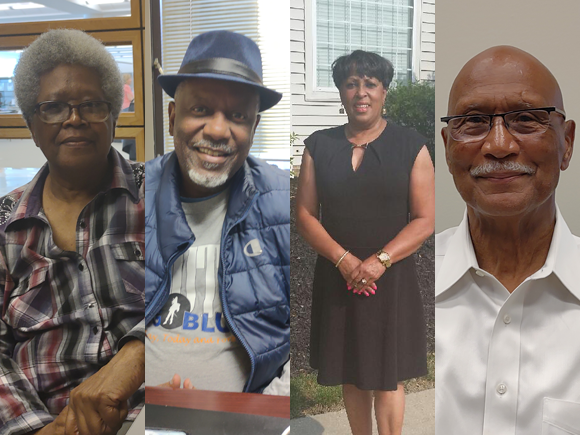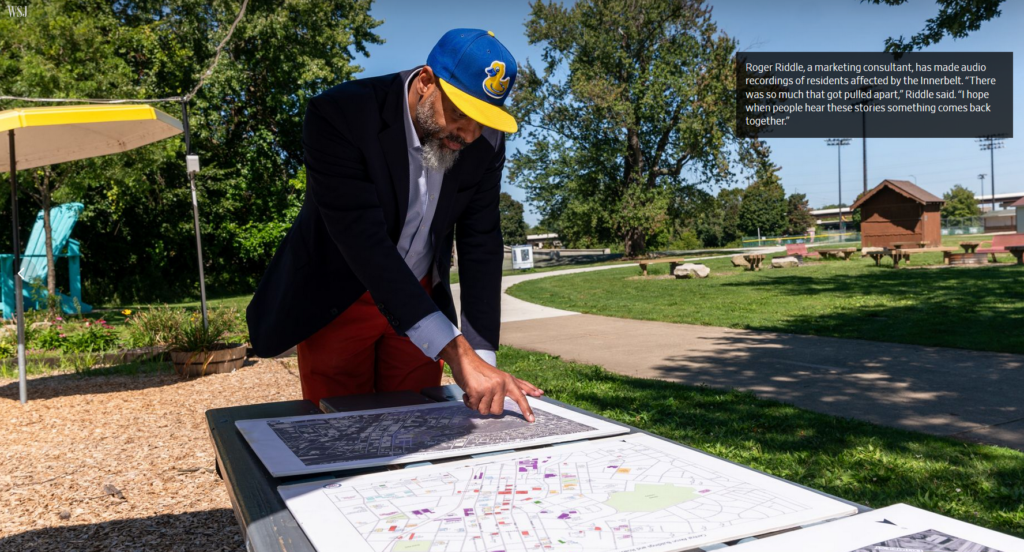Innerbelt Neighborhood Stories

The Project
In the early 1970s construction began on a freeway that was built with the intention to help get people quickly travel from the suburbs into downtown. It was built to accommodate daily usage by 120,000 vehicles. However, at that same time Akron’s main industry was closing its factories in the area. This meant a significant reduction in the number of people who were making daily trips to and from downtown, so much so that it never reached 15% of its designed intended use. In 2016 a section of the Innerbelt was decommissioned and the City of Akron began to wonder how this large plot of land could be used.
Then there is another part to this story. It’s estimated that construction of the freeway displaced between 500,000 to 1,000,000 Akronites and numerous thriving businesses. During the time of construction the vast majority of the residents were Black and many of the businesses were Black-owned. There is a version of this story in just about every city in the United States that has a freeway that passes through its core.
For many of the communities affected by what was often referred to as “urban renewal” projects, the history of these neighborhoods have never been documented and so little is know about the people who called this area home and the businesses that helped make up a part of everyday life. However, when the City of Akron began working with Liz Ogbu of Studio O to write a strategy for what to do with the 30 acres of land in the decommissioned area of the freeway, Ogbu suggested capturing the stories of former residents. This was intended not only preserve a piece of Akron’s history that had been missing, but to also help inform what the lifeless freeway could become.
Ogbu reached out to Roger Riddle Consulting Limited to discuss producing an oral history for the neighborhood. We started collecting the stories by first interviewing members of the Reconnecting Our Community Advisory Committee. This group of Akronites was made up of former residents who had for years been looking for a way to address the issues of past with regards to the Innerbelt.
Each interview was then recorded, often utilizing the Akron Summit Public Library’s audio studio to conduct the recording sessions, and then edited into two different segments. The first segment was titled “Remembering the Neighborhood,” and gave these former residents a chance to share what the neighborhood was like when the community was well connected with their neighbors, the businesses, and to the other neighborhoods in the city. The second segment was called “Innerbelt Construction” and gave those being interviewed the opportunity to share memories about how the neighborhood began to change once construction of the freeway began.
We worked with the wonderful team of Mary Plazzo and Rebecca Larson Troyer with the library’s Special Collections to share transcripts of the interviews and audio segments, and to archive the audio for downloading and streaming on SummitMemory.org. This gave them searchable records for any future researchers who came to the library looking for information about the neighborhoods and also make the stories publicly accessible.
Results
The interviews were used by Liz Ogbu to help inform the “Reconnecting Our Community – Phase 1 Report,” which documents the history of the Innerbelt, the work that has been done to date, and suggests a strategy for how to approach the redevelopment of the decommissioned area of the freeway. The City of Akron highlighted some of the stories on their AkronInnerbelt.com website, which is a clearinghouse for information about the progress being made on the Innerbelt. They also cited the oral history project in their Akron Innerbelt Planning Grant Narrative. The grant narrative was awarded a Reconnecting Communities Program grant from the US Department of Transportation to develop a Master Plan for the decommissioned section of the Innerbelt.

Screen capture from WSJ.com article, “An Akron Highway Cut Off a Black Community. The City Is Trying to Fix It.”
Media Mentions
- Wall Street Journal – “An Akron Highway Cut Off a Black Community. The City Is Trying to Fix It.”
- Akron Beacon Journal – “With city’s help, now you can hear the stories of those displaced by Akron Innerbelt.”
- Ideastream Public Media – “Innerbelt History Collection will gather stories of a neighborhood displaced by a highway.”
- Cleveland Plain Dealer – “Akron’s Innerbelt History Collection spotlights history of displaced neighborhoods…”